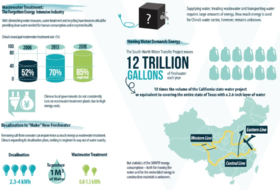Circular Economy practices can have a significant impact on the competitiveness of Bangladesh’s apparel industry. Implementation of circular practices such as reducing waste, increasing resource efficiency, and utilizing sustainable materials can improve the environmental and social performance of the industry, thereby enhancing its reputation and increasing consumer demand for sustainable products. A study by the International Finance Corporation (IFC) found that the adoption of circular economy practices in Bangladesh’s apparel industry could lead to cost savings of up to 15% in the long term. This is due to the reduced need for raw materials and energy, as well as reduced waste management costs. The same study also highlighted that circular practices could help to reduce environmental impacts, such as water and energy consumption, and greenhouse gas emissions. 
Circular economy practices can enhance the industry’s competitiveness by enabling it to meet the increasing demand for sustainable products from consumers and retailers. According to a survey conducted by the Textile Exchange, 63% of consumers expect brands to be more sustainable, and 80% are willing to pay more for sustainable products. Improving the industry’s environmental and social performance, circular economy practices can also increase the efficiency and resilience of the industry’s supply chain. This can lead to increased productivity and faster response times, which are essential for competing in the fast-paced global market.
Adopting circular economy practices can have a positive impact on the competitiveness of Bangladesh’s apparel industry by reducing costs, improving brand image, accessing new markets, driving innovation, and ensuring regulatory compliance. Circular economy practices have the potential to positively impact the competitiveness of Bangladesh’s apparel industry. Here are some data-driven explanations:
- Cost savings: Adopting circular economy practices can help companies reduce costs by decreasing their dependence on virgin raw materials and reducing waste. For example, using recycled materials in production can help companies save money on raw material procurement while reducing waste can reduce costs associated with waste disposal. According to a report by the Ellen MacArthur Foundation, adopting circular economy practices could lead to cost savings of up to $500 billion annually in the global apparel industry by 2030.
- Improved brand image: Consumers are increasingly conscious of the environmental and social impact of the products they purchase, and are often willing to pay more for sustainable and ethical products. By adopting circular economy practices, companies can improve their brand image and attract more environmentally and socially conscious consumers. This can translate into increased sales and a competitive advantage over companies that do not prioritize sustainability.
- Access to new markets: Companies that adopt circular economy practices can gain access to new markets and customers that prioritize sustainable and ethical production. For example, the EU is implementing regulations to promote sustainable production and consumption, which will require companies to comply with strict environmental and social standards. By adopting circular practices, Bangladeshi apparel companies can gain access to the EU market and other markets with similar regulations.
- Increased innovation: Circular economy practices require a shift in the traditional linear model of production and consumption, which can drive innovation in product design, manufacturing processes, and business models. By adopting circular practices, companies can differentiate themselves from competitors and create new revenue streams from recycled and upcycled materials.
- Regulatory compliance: Governments around the world are implementing regulations to promote sustainable production and consumption, which will require companies to adopt circular economy practices. By proactively adopting these practices, companies can ensure they are compliant with future regulations and avoid potential fines and penalties.
- Improved supply chain efficiency: Circular economy practices such as recycling and reusing waste materials can help companies optimize their supply chain by reducing the need for virgin raw materials and minimizing waste. This can improve the overall efficiency of the supply chain, reducing lead times and costs associated with transportation and storage.
- Enhanced customer loyalty: Adopting circular economy practices can help companies build stronger relationships with their customers by demonstrating their commitment to sustainability and social responsibility. This can lead to increased customer loyalty and repeat purchases, providing a competitive advantage over companies that do not prioritize sustainability.
- Increased access to financing: Investors and lenders are increasingly looking for companies that prioritize sustainability and demonstrate a commitment to environmental and social responsibility. By adopting circular economy practices, companies can improve their access to financing and attract investors who prioritize sustainability.
- Improved labor conditions: Circular economy practices can also have a positive impact on labor conditions in the apparel industry. For example, using recycled materials can reduce the need for labor-intensive processing of virgin materials, reducing the risk of labor exploitation. Additionally, adopting circular practices can help companies improve their overall social responsibility by prioritizing fair labor practices, safe working conditions, and ethical sourcing.
- Innovation: Adopting circular economy practices can drive innovation within the apparel industry. Companies can develop new products and services that prioritize sustainability, leading to new revenue streams and competitive advantages.
- Brand reputation: Consumers are becoming increasingly aware of environmental and social issues, and are more likely to support companies that prioritize sustainability and social responsibility. By adopting circular economy practices, companies can enhance their brand reputation, attracting new customers and retaining existing ones.
- Collaboration: The circular economy requires collaboration across the supply chain, from raw material suppliers to retailers. Adopting circular economy practices can encourage greater collaboration and cooperation between companies, leading to improved supply chain resilience and competitiveness.
- Regulatory compliance: Governments around the world are implementing regulations aimed at reducing environmental impact and promoting sustainability. Adopting circular economy practices can help companies comply with these regulations, reducing the risk of fines and legal action.
- Value creation: Adopting circular economy practices can create new opportunities for value creation, driving growth and competitiveness. For example, companies can develop new products and services that prioritize sustainability, opening up new revenue streams and markets.
- Supply chain efficiency: The circular economy requires collaboration and coordination across the entire supply chain. By adopting circular economy practices, companies can improve their supply chain efficiency and resilience, reducing the risk of disruptions and improving their competitiveness.
- Export competitiveness: Adopting circular economy practices can improve the competitiveness of Bangladesh’s apparel industry in the global market. As more and more consumers prioritize sustainability, companies that prioritize circular economy practices can differentiate themselves from competitors and gain a competitive advantage in international markets.
- Increased exports: Bangladesh’s apparel industry is a significant contributor to the country’s exports, accounting for 84% of total exports in 2019. By adopting circular economy practices, the industry can improve its competitiveness in the global market, leading to increased exports and foreign exchange earnings. A study by the United Nations Industrial Development Organization (UNIDO) estimates that the circular economy could increase the value of Bangladesh’s textile and garment exports by 15-20%.
- Job creation: Bangladesh’s apparel industry is one of the largest employers in the country, providing jobs for around 4.5 million people. Adopting circular economy practices can create new job opportunities in areas such as recycling, waste management, and sustainable design. A report by the Ellen MacArthur Foundation estimates that the circular economy could create up to 100,000 new jobs in Bangladesh’s textile and garment sector by 2030.
- Resource efficiency: Circular economy practices can help Bangladesh’s apparel industry improve its resource efficiency, leading to cost savings and improved competitiveness. A study by the Bangladesh Garment Manufacturers and Exporters Association (BGMEA) found that adopting resource-efficient practices could lead to cost savings of up to 5% for garment manufacturers.
- Reduced environmental impact: Circular economy practices can help Bangladesh’s apparel industry reduce its environmental impact, leading to long-term economic benefits. By reducing waste and pollution, companies can avoid costly environmental damage and comply with increasingly stringent environmental regulations. A study by the International Finance Corporation (IFC) estimates that implementing circular economy practices could reduce greenhouse gas emissions in Bangladesh’s textile and garment sector by up to 50%.
There are several challenges that need to be overcome to successfully implement circular economy practices in Bangladesh’s apparel industry. Firstly, there is a lack of awareness and understanding of circular economy principles among industry stakeholders, including manufacturers, suppliers, and customers. This makes it difficult to create a coordinated and integrated approach to circular economy practices.
Secondly, there is a lack of infrastructure and technology to support circular economy practices. For example, there are few recycling facilities in Bangladesh, which makes it difficult to implement closed-loop production systems. Similarly, there is limited availability of sustainable materials and technologies that can be used in circular production processes.
Thirdly, there are cost barriers to implementing circular economy practices. For example, investing in new infrastructure and technology can be expensive, and many small and medium-sized enterprises (SMEs) in the industry may struggle to afford these investments. Additionally, there may be additional costs associated with sourcing sustainable materials and implementing more environmentally-friendly production processes.
Fourthly, there are regulatory and policy challenges. There is a need for clear guidelines and regulations on circular economy practices in the industry, as well as incentives and support for companies that are working towards more sustainable and circular practices. Without supportive policies and regulations, it may be difficult for the industry to transition to a circular model.
However, the circular economy practices in Bangladesh’s apparel industry can contribute significantly to the national economy by increasing exports, creating jobs, improving resource efficiency, and reducing environmental impact. By prioritizing circularity and sustainability, the industry can position itself for long-term economic success and growth. The adoption of circular economy practices has the potential to significantly impact the competitiveness of Bangladesh’s apparel industry by reducing costs, improving environmental and social performance, meeting consumer demand for sustainable products, and increasing supply chain efficiency and resilience.
By implementing practices such as reducing waste, recycling, and extending product lifecycles, the industry can not only reduce its environmental impact but also improve its competitiveness. Through the adoption of circular economy practices, the industry can create new revenue streams, reduce costs, and enhance its brand value. However, there are also challenges to overcome, such as the need for investment in new technologies and changes in consumer behavior. Overall, the circular economy approach presents a promising path toward sustainable growth for Bangladesh’s apparel industry.
Author:
Dr. Md Ekram Hossain
Research Faculty (Assistant Professor), Hohai University, China
Email: mdekram_hossain@hhu.edu.cn







